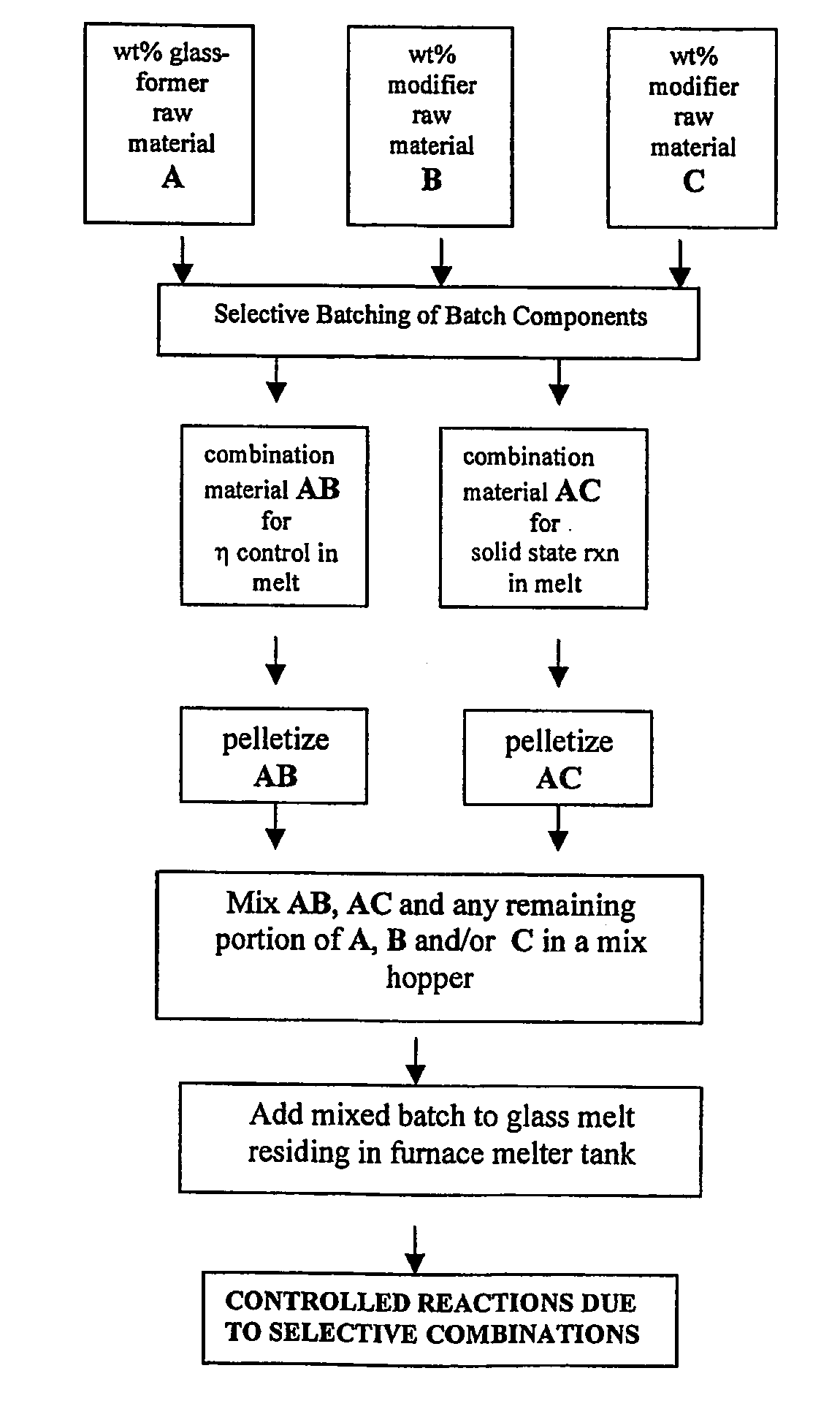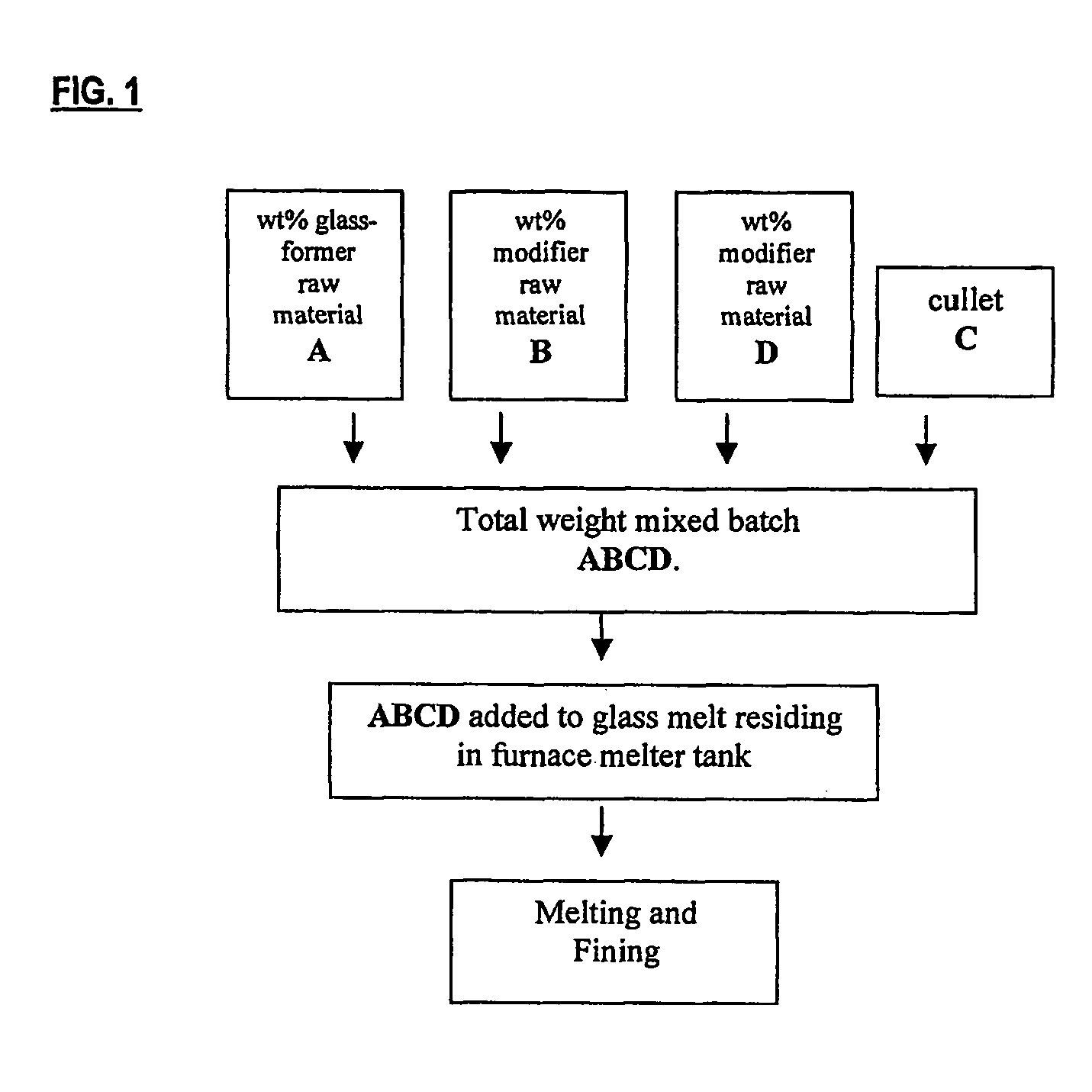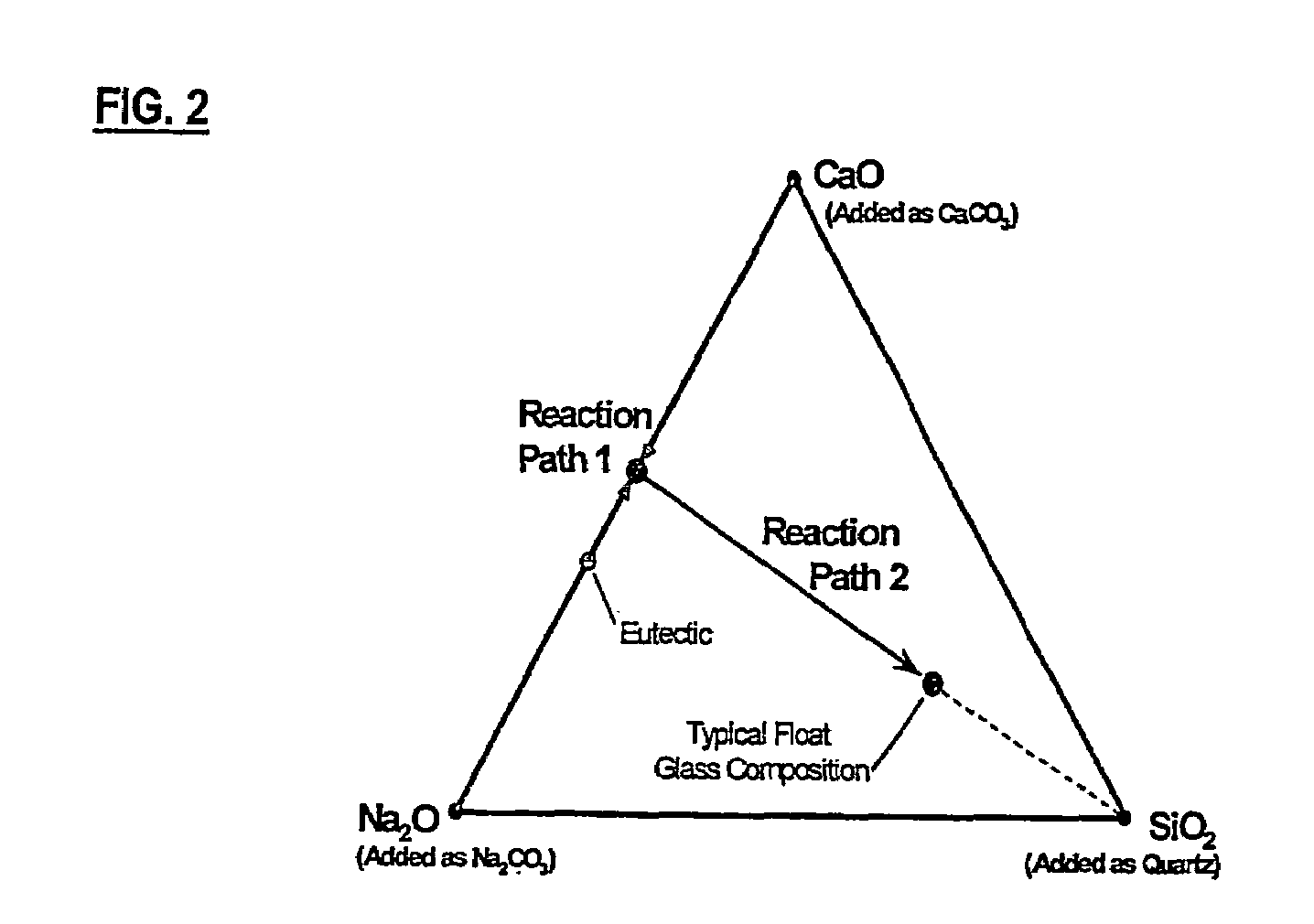Selective glass batching methods for improving melting efficiency and reducing gross segregation of glass batch components
a batching method and glass technology, applied in glass furnaces, glass making apparatus, manufacturing tools, etc., can solve the problems of increasing the tendency of batch segregation, borates showing similar problems, and the effort of batch mixing, so as to improve the melting efficiency
- Summary
- Abstract
- Description
- Claims
- Application Information
AI Technical Summary
Benefits of technology
Problems solved by technology
Method used
Image
Examples
example
[0078]The following example is particularly directed to a float glass composition and melting scenario. FIG. 8 is a flow diagram illustrating the selective batching method according to the example. Traditional batch components of Na2CO3, CaCO3, and SiO2 are provided. Instead of simply mixing all of these raw material components together, however, specific combinations of these raw materials are selectively pre-batched.
[0079]That is, Na2CO3 is selectively batched with quartz in the eutectic proportions of the Na2O-SiO2 system to provide a first combination material to minimize the possibility of low viscosity liquid formation by preventing the eutectic reaction of Na2CO3 with other raw materials (such as CaCO3) that ordinarily occurs absent the selective batching according to the present invention. CaCO3 is selectively combined and pre-reacted with quartz to form a second combination material (i.e., an intermediate reaction product). In this case, the second combination material is w...
PUM
| Property | Measurement | Unit |
|---|---|---|
| temperature | aaaaa | aaaaa |
| viscosity | aaaaa | aaaaa |
| viscosity | aaaaa | aaaaa |
Abstract
Description
Claims
Application Information
 Login to View More
Login to View More - R&D
- Intellectual Property
- Life Sciences
- Materials
- Tech Scout
- Unparalleled Data Quality
- Higher Quality Content
- 60% Fewer Hallucinations
Browse by: Latest US Patents, China's latest patents, Technical Efficacy Thesaurus, Application Domain, Technology Topic, Popular Technical Reports.
© 2025 PatSnap. All rights reserved.Legal|Privacy policy|Modern Slavery Act Transparency Statement|Sitemap|About US| Contact US: help@patsnap.com



